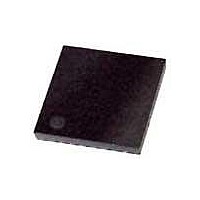ATA5811-PLQW Atmel, ATA5811-PLQW Datasheet - Page 15

ATA5811-PLQW
Manufacturer Part Number
ATA5811-PLQW
Description
RF Transceiver RF DATA CONTROL Transceiver
Manufacturer
Atmel
Datasheet
1.ATA5811-PLHC.pdf
(92 pages)
Specifications of ATA5811-PLQW
Operating Supply Voltage
2.5 V, 3.3 V, 5 V
Mounting Style
SMD/SMT
Package / Case
QFN-48 EP
Minimum Operating Temperature
- 40 C
Operating Temperature (min)
-40C
Operating Temperature (max)
105C
Operating Temperature Classification
Industrial
Product Depth (mm)
7mm
Product Height (mm)
0.9mm
Product Length (mm)
7mm
Lead Free Status / RoHS Status
Lead free / RoHS Compliant
Available stocks
Company
Part Number
Manufacturer
Quantity
Price
Company:
Part Number:
ATA5811-PLQW
Manufacturer:
ATMEL
Quantity:
971
Part Number:
ATA5811-PLQW
Manufacturer:
ATMEL/爱特梅尔
Quantity:
20 000
5.7
5.8
5.9
4689F–RKE–08/06
Inband Disturbers, Data Filter, Quasi Peak Detector, Data Slicer
DEM_OUT Output
RSSI Output
This high blocking performance makes it even possible for some applications using quarter
wave whip antennas to use a simple LC band-pass filter instead of a SAW filter in the receiver.
W h e n d e s i g n i n g s u c h a n L C f i l t e r t a k e i n t o a c c o u n t t h a t t h e 3 d B b l o c k i n g a t
433.92 MHz/2 = 216.96 MHz is 43 dBC and at 433.92 MHz/3 = 144.64 MHz is 48 dBC and at
2
cially that at 3
LO harmonic receiving frequency with only 12 dBC blocking.
If a disturbing signal falls into the received band or a blocker is not continuous wave the perfor-
mance of a receiver strongly depends on the circuits after the IF filter. Hence the demodulator,
data filter and data slicer are important in that case.
The data filter of the ATA5811/ATA5812 implies a quasi peak detector. This results in a good
suppression of the above mentioned disturbers and exhibits a good carrier to Gaussian noise
performance. The required useful signal to disturbing signal ratio to be received with a BER of
10
(BR_Range_3) in FSK mode. Due to the many different waveforms possible these numbers are
measured for signal as well as for disturbers with peak amplitude values. Note that these values
are worst case values and are valid for any type of modulation and modulating frequency of the
disturbing signal as well as the receiving signal. For many combinations, lower carrier to disturb-
ing signal ratios are needed.
The internal raw output signal of the demodulator Demod_Out is available at pin DEM_OUT.
DEM_OUT is an open drain output and must be connected to a pull-up resistor if it is used (typi-
cally 100 k ) otherwise no signal is present at that pin.
The output voltage of the pin RSSI is an analog voltage, proportional to the input power level.
Using the RSSI output signal, the signal strength of different transmitters can be distinguished.
The usable dynamic range of the RSSI amplifier is 70 dB, the input power range P(RF
–115 dBm to –45 dBm and the gain is 8 mV/dB.
teristic of a typical device at 433.92 MHz with VS1 = VS2 = 2.4 V to 3.6 V and T
+105°C with a matched input according to
868.3 MHz about 2.7 dB more signal level and at 315 MHz about 1 dB less signal level is
needed for the same RSSI results.
-3
(433.92 MHz + 226 kHz) + –226 kHz = 868.066 MHz/868.518 MHz is 56 dBC. And espe-
is less than 12 dB in ASK mode and less than 3 dB (BR_Range_0 ... BR_Range_2)/6 dB
(433.92 MHz + 226 kHz)+226 kHz = 1302.664 MHz the receiver has its second
Table 5-2 on page 10
Figure 5-6 on page 16
ATA5811/ATA5812
and
Figure 5-1 on page
shows the RSSI charac-
amb
= –40°C to
IN
) is
10. At
15
















